To Slash, or Not To Slash
http://www.st-max.org/ae-backslash.htm
This article got me thinking when I read it awhile back. Now, I am not refuting what appears to be the overall premise of the work (that slashing on the back of a landsknecht Wams/doublet appears to less common than a lack of slashing), but a friend of mine did find these examples - S.M., you know who you are! *grin*
I am webbing the images, along with some of his notes, because I recently stumbled across the letter containing them again while cleaning out my e-mail inbox and I want to keep it handy for future reference.
Besides, I always like the possibility that further discussion may come of this post!
BTW - My friend knows the difference between a Wams and a Ledergollar, and is citing these as specific examples of the WAMS being slashed. After all, it was common for the Ledergollar (the leather-vest-like outer layer) to have slashing on the back. I have inserted the images in the text below in the same order he originally cited them as attachments.
From S.M.:
I stuck to images of soldiers in context and there is a mixture. The tendency seems to be men wearing un-slashed wams and slashed ledergoller, but there are some slashed wams and some
un-slashed ledergoller. I think the reasoning behind the choice would need much deeper exploration.
From an exhibition book I picked up
Hans Schobser, ~1504
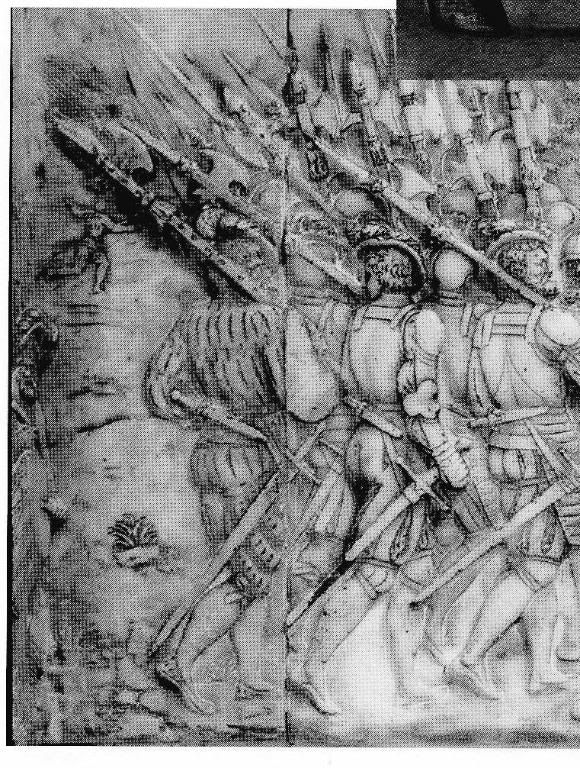
From _Soldat- und Waffenhandwerk_ by Georg Liebe, 1899.
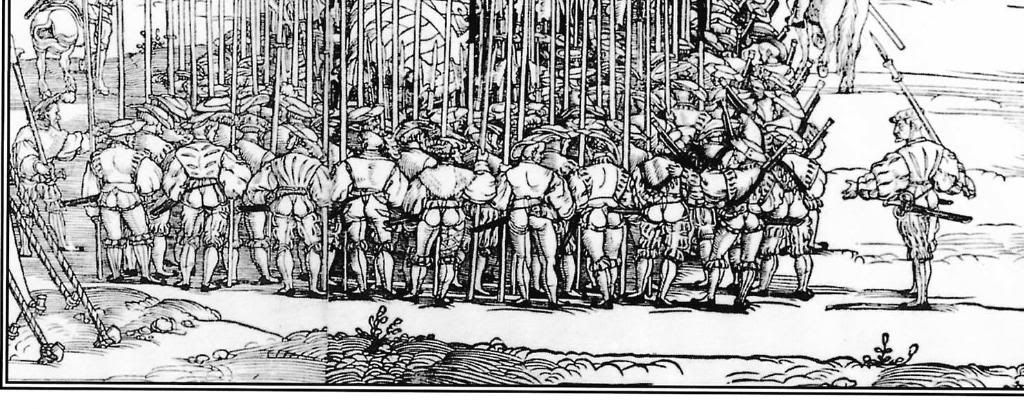
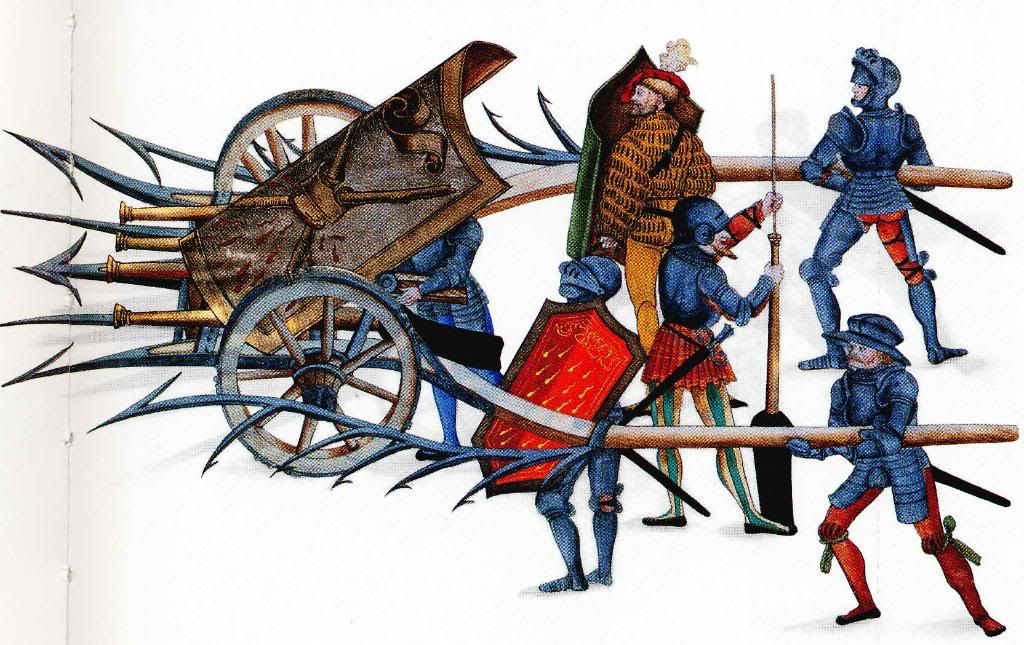
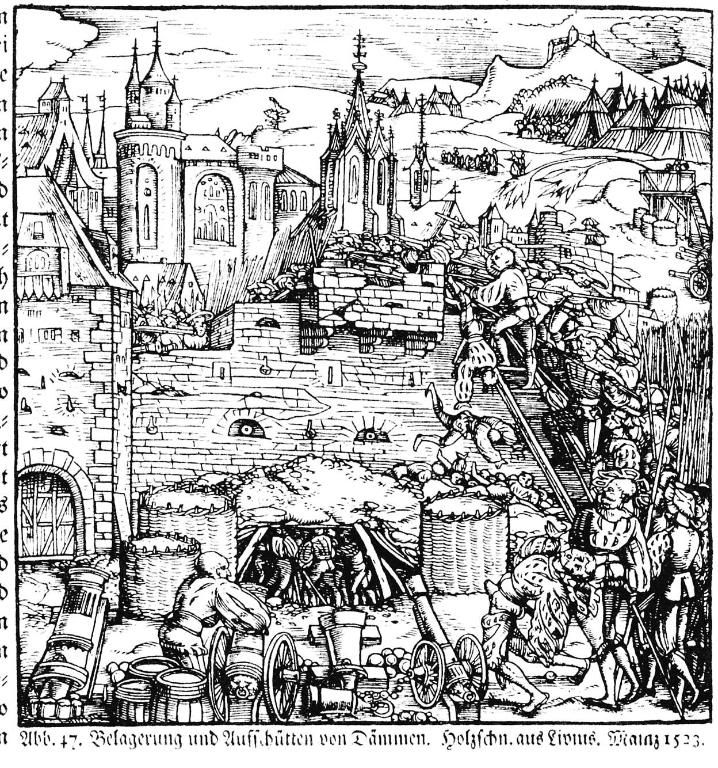
Some images, but mostly references because I am sure you have these books:
From _The Renaissance at War_ by Thomas Arnold
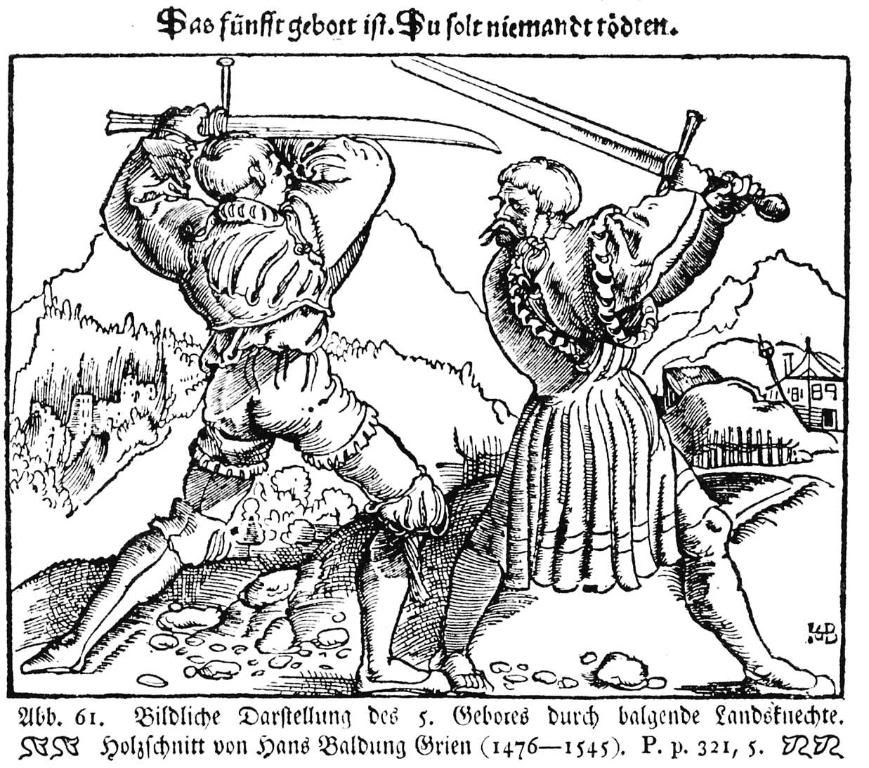
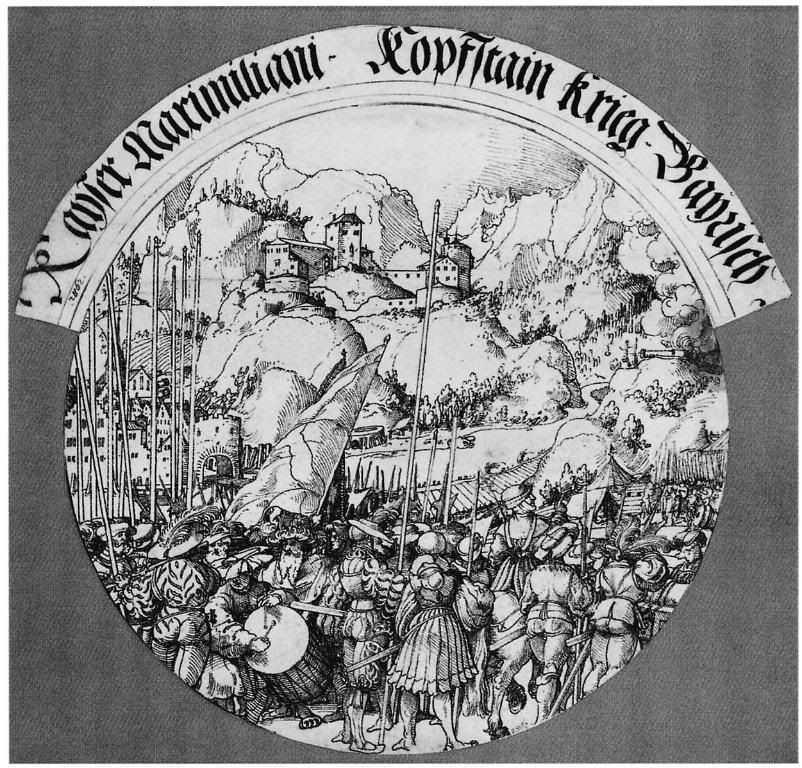
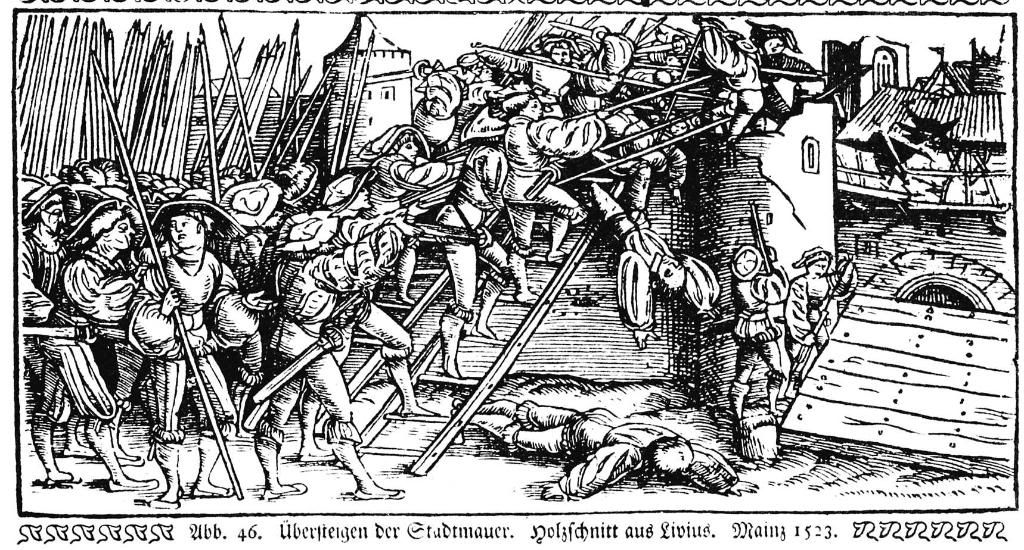
Additional images in these sources:
From _The Renaissance at War_ by Thomas Arnold
pp. 151
From _GSLW, 1500-1550_
Niklas Stoer
pp. 1316, 1323, 1343
From the Dover version of The Triumph
pp. 92, 99, 103, 126
Oh and as an aside, I came across this as I was looking for the plural of "goller" (never found that):
The following is from a 1488 inventory of the weapons held by peasants in a south German territory:
Der alt Cunrat Zick ain arbrust
ain bantzer ain brust ain goler
ij hensthüch ain hellen parte_
und but ain hoff hant ain sun
Proposed translation:
Old man Conrad Zick has a crossbow, an armor breast plate, ain brust?, ain goler?, two gloves, and one halberd. He works a farm and has a son.
Pretty well armed peasants..... I am not sure where the rest of this inventory is to be found.
This article got me thinking when I read it awhile back. Now, I am not refuting what appears to be the overall premise of the work (that slashing on the back of a landsknecht Wams/doublet appears to less common than a lack of slashing), but a friend of mine did find these examples - S.M., you know who you are! *grin*
I am webbing the images, along with some of his notes, because I recently stumbled across the letter containing them again while cleaning out my e-mail inbox and I want to keep it handy for future reference.
Besides, I always like the possibility that further discussion may come of this post!
BTW - My friend knows the difference between a Wams and a Ledergollar, and is citing these as specific examples of the WAMS being slashed. After all, it was common for the Ledergollar (the leather-vest-like outer layer) to have slashing on the back. I have inserted the images in the text below in the same order he originally cited them as attachments.
From S.M.:
I stuck to images of soldiers in context and there is a mixture. The tendency seems to be men wearing un-slashed wams and slashed ledergoller, but there are some slashed wams and some
un-slashed ledergoller. I think the reasoning behind the choice would need much deeper exploration.
From an exhibition book I picked up
Hans Schobser, ~1504

From _Soldat- und Waffenhandwerk_ by Georg Liebe, 1899.



Some images, but mostly references because I am sure you have these books:
From _The Renaissance at War_ by Thomas Arnold



Additional images in these sources:
From _The Renaissance at War_ by Thomas Arnold
pp. 151
From _GSLW, 1500-1550_
Niklas Stoer
pp. 1316, 1323, 1343
From the Dover version of The Triumph
pp. 92, 99, 103, 126
Oh and as an aside, I came across this as I was looking for the plural of "goller" (never found that):
The following is from a 1488 inventory of the weapons held by peasants in a south German territory:
Der alt Cunrat Zick ain arbrust
ain bantzer ain brust ain goler
ij hensthüch ain hellen parte_
und but ain hoff hant ain sun
Proposed translation:
Old man Conrad Zick has a crossbow, an armor breast plate, ain brust?, ain goler?, two gloves, and one halberd. He works a farm and has a son.
Pretty well armed peasants..... I am not sure where the rest of this inventory is to be found.